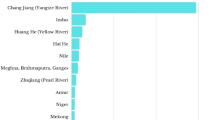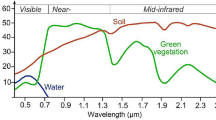Abstract
Coral reefs, of all marine ecosystems, are the most diverse. They teem with life with almost a quarter of all ocean species depending upon reefs for food and shelter. Because of the immense diversity of coral reefs, they are often referred to as the ‘Rain-Forests of the Sea’. But due to the lack of consistency and objectivity in human labeling, the manual annotations of coral reefs are not conceivable. Multiple species of coral have coinciding characteristics and this makes automatic annotation, a challenging task. This research work is based on developing machine learning algorithms to employ Aura Matrix based on gradient based Cumulative Relative Difference which exploits the neighborhood relationship between pixels by comparing the relative pixel strength with respect to the center pixel. The objective of this paper is to show improvement of coral reef classification accuracy and that the proposed work outperforms the state-of-the art CNN classifiers on four coral datasets namely EILAT, EILAT 2, MLC 2010 and RSMAS.






Similar content being viewed by others
References
Foley, N., & Armstrong, C. W. (2010). The ecological and economic value of cold-water coral ecosystems. Ocean and Coastal Management, 53(7), 313–326.
Gómez-Ríos, A., Tabik, S., Julián Luengo, A. S. M., Shihavuddin, B. K., & Herrera, F. (2019). Towards highly accurate coral texture images classification using deep convolutional neural networks and data augmentation. Expert Systems with Applications, 118, 315–328.
De’ath, G., Fabricius, K. E., Sweatman, H., & Puotinen, M. (2012). The 27-year decline of coral cover on the Great Barrier Reef and its causes. Proceedings of the National Academy of Sciences, 109(44), 17995–17999.
Hoegh-Guldberg, O. (2004). Coral reefs in a century of rapid environmental change. Symbiosis, 37(1–3), 1–31.
https://www.carbonbrief.org/severe-coral-reef-bleaching-now-five-times-more-frequent-than-40-years-ago. Retrieved February 7, 2019.
Beijbom, O., Edmunds, P. J., Kline, D. I., Mitchell, B. G., & Kriegman, D. (2012). Automated annotation of coral reef survey images. In 2012 IEEE conference on computer vision and pattern recognition (pp. 1170–1177).
Mehta, A., Ribeiro, E., Gilner, J., & Woesik, R. V. (2007). Coral reef texture classification using support vector machines. VISAPP, 2, 302–310.
Pizarro, O., Rigby, P., Johnson-Roberson, M., Williams, S. B., & Colquhoun, J. (2008). Towards image-based marine habitat classification. In Oceans (pp. 1–7).
Purser, A., Bergmann, M., Lundälv, T., Ontrup, J., & Nattkemper, T. W. (2009). Use of machine-learning algorithms for the automated detection of cold-water coral habitats: a pilot study. Marine Ecology Progress Series, 397, 241–251.
Marcos, M. S. A., David, L., Peñaflor, E., Ticzon, V., & Soriano, M. (2008). Automated benthic counting of living and non-living components in Ngedarrak Reef, Palau via subsurface underwater video. Environmental Monitoring Assess, 145, 177–184.
Stokes, M., & Deane, G. (2009). Automated processing of coral reef benthic images. Limnology and Oceanography: Methods, 7(2), 157–168.
Shihavuddin, A. S. M., Gracias, N., Garcia, R., Gleason, A., & Gintert, B. (2013). Image-based coral reef classification and thematic mapping. Remote Sensing, 5, 1809–1841.
Asha Paul, M., Kavitha, J., & ArockiaJansi Rani, P. (2018). Key-frame extraction techniques—A review. Recent Patents on Computer Science, 11(1), 3–16.
Li, Y., Zhang, T., & Tretter, D. (2001). An overview of video abstraction techniques. Technical Report HPL-2001-191, HP Laboratory.
Elfadel, I.-M., & Picard, R.-W. (1994). Gibbs random fields, co-occurrences, and texture modeling. IEEE Transaction on Pattern Analysis and Machine Intelligence, 16(1), 24–37.
Qin, X., & Yang, Y.-H. (2005). Basic gray level aura matrices: theory and its application to texture synthesis. In Tenth IEEE international conference on computer vision (ICCV'05) (Vol. 1, pp. 128–135).
Ullah, I., Hussain, M., Muhammad, G., Aboalsamh, H., Bebis, G., & Mirza, A. M. (2012). Gender recognition from face images with local WLD descriptor. In 2012 19th international conference on systems, signals and image processing (IWSSIP) (pp. 417–420).
Haliche, Z., & Hammouche, K. (2011). The gray level aura matrices for textured image segmentation. Analog Integrated Circuits and Signal Processing, 69(1), 29–38.
ZamriCordovaKhairuddinMokhtarYusof, M. I. F. A. S. N. R. (2016). Tree species classification based on image analysis using improved-basic gray level aura matrix. Computers and Electronics in Agriculture, 124, 227–233.
Chen, J., Shan, S., He, C., Zhao, G., Pietikainen, M., Chen, X., et al. (2009). WLD: A robust local image descriptor. IEEE Transactions on Pattern Analysis and Machine Intelligence, 32(9), 1705–1720.
Haralick, R. M., Shanmugam, K., & Dinstein, I. H. (1973). Textural features for image classification. IEEE Transactions on Systems, Man, and Cybernetics, SMC-3(6), 610–621.
Ani, D. (2018). Coral reef image/video classification employing novel octa-angled pattern for triangular sub region and pulse coupled convolutional neural network (PCCNN). Multimedia Tools and Applications, 77(24), 31545–31579.
Fukushima, K. (1980). Neocognitron: A self-organizing neural network model for a mechanism of pattern recognition unaffected by shift in position. Biological Cybernetics, 36(4), 193–202.
Shakoor, M. H., & Boostani, R. (2017). A novel advanced local binary pattern for image-based coral reef classification. Multimedia Tools and Applications, 77(2), 2561–2591.
Geng, C., & Jiang, X. (2009). Face recognition using sift features. In Image processing (ICIP), 2009 16th IEEE international conference on image processing (pp. 3313–3316).
Li, W., Mao, K., Zhang, H., & Chai, T. (2010). Selection of gabor filters for improved texture feature extraction. In 17th IEEE international conference on Image processing (icip) (pp. 361–364).
Ani Brown Mary, N., & Dejey, D. (2017). Classification of coral reef submarine images and videos using a novel Z with tilted Z local binary pattern (ZTZLBP). Wireless Personal Communications. https://doi.org/10.1007/s11277-017-4981-x.
Mary, A. B., & Dharma, D. (2017). Coral reef image classification employing improved LDP for feature extraction. Journal of Visual Communication and Image Representation, 4(9), 225–242.
Guo, Z., Zhang, L., & Zhang, D. (2010). A completed modeling of local binary pattern operator for texture classification. IEEE Transactions on Image Processing, 19(6), 1657–1663.
Acknowledgements
The authors are grateful to Prof. Peter. J. Edmunds who has provided us permission to use the MLC2010 dataset. The authors express sincere gratitude to Prof. ASM Shihavuddin for furnishing the datasets EILAT, EILAT2 RED SEA and RSMAS.
Author information
Authors and Affiliations
Corresponding author
Additional information
Publisher's Note
Springer Nature remains neutral with regard to jurisdictional claims in published maps and institutional affiliations.
Rights and permissions
About this article
Cite this article
Asha Paul, M., Arockia Jansi Rani, P. & Liba Manopriya, J. Gradient Based Aura Feature Extraction for Coral Reef Classification. Wireless Pers Commun 114, 149–166 (2020). https://doi.org/10.1007/s11277-020-07355-6
Published:
Issue Date:
DOI: https://doi.org/10.1007/s11277-020-07355-6




